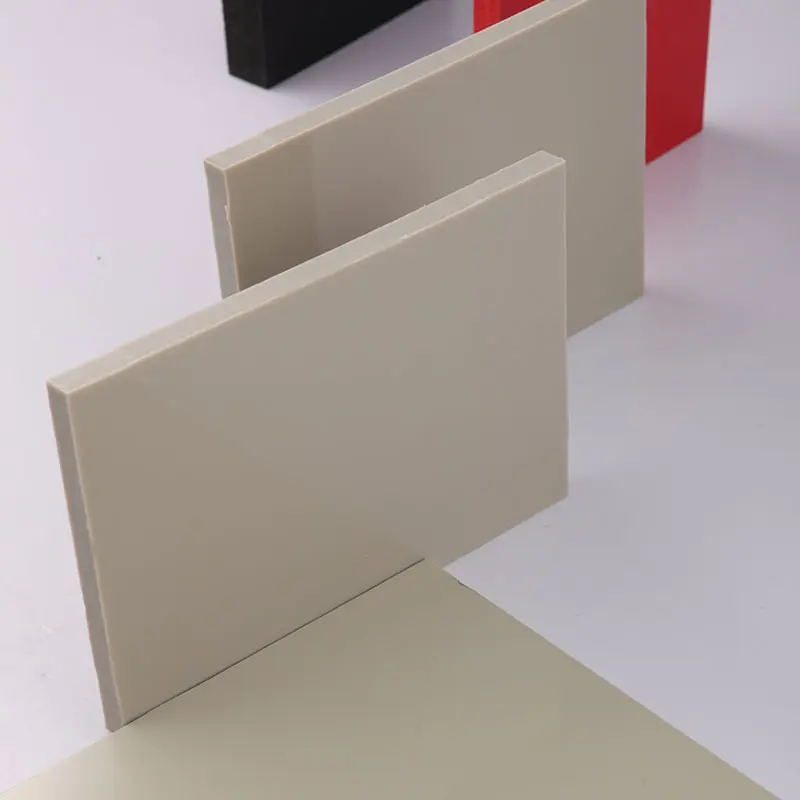Oct . 10, 2024 17:46 Back to list
Exploring the Benefits and Applications of PPR Pipe in Modern Plumbing Solutions
Understanding PPR Pipes An Overview
Polypropylene Random Copolymer (PPR) pipes have emerged as one of the most preferred choices for plumbing and piping systems in various applications. Their unique characteristics, longevity, and cost-effectiveness make them suitable for both residential and industrial settings. This article delves into the properties, advantages, applications, and installation techniques associated with PPR pipes.
What Are PPR Pipes?
PPR pipes are made from a thermoplastic polymer known as polypropylene, specifically in its random copolymer form. This construction gives PPR pipes several advantageous properties such as excellent chemical resistance, high impact strength, and minimal thermal expansion. PPR pipes are often colored green or white, and they are available in various sizes and thicknesses to cater to specific requirements.
Key Properties of PPR Pipes
1. Durability PPR pipes boast a long service life, typically exceeding 50 years under normal operating conditions. They are resistant to corrosion and scaling, making them ideal for transporting water and other fluids.
2. Chemical Resistance One of the standout features of PPR pipes is their ability to resist a wide range of chemicals. This characteristic makes them suitable for industrial applications, including the transportation of corrosive substances.
3. Heat Resistance PPR pipes can withstand high temperatures, with a maximum temperature rating of around 95°C (203°F). This quality allows them to be used in hot water systems without compromising integrity.
4. Lightweight Compared to traditional materials such as metal, PPR pipes are significantly lighter, making them easier to handle and install. This attribute leads to reduced transportation and installation costs.
5. Low Thermal Conductivity PPR pipes have lower thermal conductivity, which reduces heat loss when transporting hot water, making them energy-efficient for heating systems.
Advantages of PPR Pipes
- Easy Installation PPR pipes can be easily joined using fusion welding techniques, where the pipe ends are melted and fused together. This ensures a smooth and leak-proof connection.
- Cost-Effectiveness The lower cost of materials combined with the ease of installation reduces overall project costs. Additionally, their longevity means fewer replacements and repairs are needed over time.
- Eco-Friendly PPR is a recyclable material, which makes it an environmentally friendly choice compared to traditional piping systems.
- No Rust or Corrosion Unlike metal pipes, PPR pipes do not rust or corrode; this quality leads to a longer lifespan and reduces maintenance needs.
ppr pipe

Applications of PPR Pipes
PPR pipes find a versatile range of applications, including
1. Potable Water Supply They are widely used in residential, commercial, and industrial water supply systems due to their non-toxic nature.
2. Hot and Cold Water Systems PPR pipes are perfect for both hot and cold water systems in domestic settings, providing efficient and reliable service.
3. Heating Systems The ability to withstand high temperatures makes them ideal for underfloor heating and radiator installations.
4. Chemical Transportation Industries that require the safe transport of chemicals appreciate PPR's resistance to various substances.
5. Irrigation Systems In agricultural settings, PPR pipes are used for irrigation due to their durability and resistance to environmental factors.
Installation Guidelines
Proper installation is crucial for ensuring the longevity and effectiveness of PPR piping systems. Here are some key guidelines
- Preparation Ensure that the surfaces to be joined are clean and free from moisture.
- Cutting and Deburring Pipes should be cut with a pipe cutter to ensure clean, square edges, and any burrs should be removed prior to joining.
- Heating For fusion welding, use the appropriate heating tool to reach the designated temperature. Ensure proper alignment before fusing the pipes together.
- Cooling Allow the joint to cool without disturbance to achieve a strong bond.
Conclusion
PPR pipes represent a modern solution for a variety of plumbing and piping applications. Their robustness, ease of installation, and environmental friendliness make them a superior choice over traditional materials. As industries and households continue to seek efficient and durable piping solutions, PPR pipes are poised to maintain their prominent position in the market. Understanding their properties and applications can help users make informed decisions, ensuring the best performance for years to come.
-
PVC Transparent Sheet Roll - Durable & Flexible PVC Plastic Sheet Roll for Industrial & Home Use
NewsJun.24,2025
-
High-Quality PVC PPR Pipes and Fittings Durable ERA PPR Solutions
NewsJun.10,2025
-
High-Quality Large HDPE Sheets & Large Diameter PVC Pipe Durable Large PVC Pipe Supplier
NewsJun.10,2025
-
High Density Polyethylene Cutting Board - Durable & Food Safe
NewsJun.09,2025
-
3 Inch PVC Pipe for Durable Irrigation Affordable & Reliable
NewsJun.09,2025
-
Premium PPR Plastic Water Pipe Fittings - Durable & Leak-Free
NewsJun.09,2025

